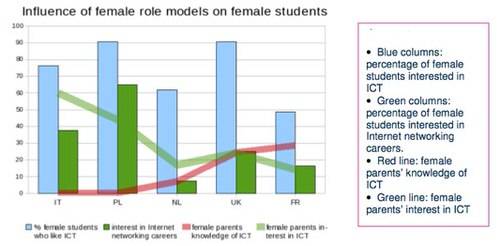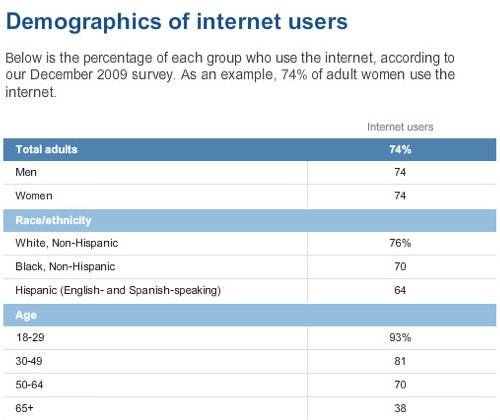
A serious geek I know asked me how many people with gray hair were at Internet conference I had just attended. I answered that there were quite a few. He shook his head and said that when the suits take over, it’s the beginning of the end of innovation.
There are two things happening here. First, the suits are taking over and, second, the pioneers are going gray. Together they make up the startup establishment. But things have changed since the early days, and this establishment hasn’t kept up with the times. The current startup system essentially excludes the untapped pool of innovators who aren’t developers – for example, women who want to launch Internet startups.
Pamela Poole is a blogger, translator and tech writer, and founder of Francophilia.com, a social startup for francophiles. Originally from California, she now lives in Paris, where her involvement in the vibrant startup scene keeps her from spending too much time in the bakeries.
A startup is traditionally the brainchild of one or several creative programmers – and less than 25% of programmers are women. This is not the only aspect of the current system that just isn’t consistent with women’s reality or, for that matter, with the reality of a society that has changed radically since the last bubble burst. And it’s not just women who are at a disadvantage, but all entrepreneurs who don’t have a technical background.
Sugar and Spice and Everything Nice
Social scientist Jane Margolis conducted a four-year study on women in computer science at Carnegie Mellon University, which explored why so few high school and university computer science students were women. The study is pretty old – it was conducted from 1995-1999 – but things don’t appear to have changed much since then, according to this 2009 study commissioned by Cisco. And though the Carnegie Mellon study addresses computer science education, for purposes of this article, I take the liberty of extrapolating and applying these findings to the startup environment in general.

In the Carnegie Mellon study, she found that:
[W]omen come to the field of computing at a different pacing and have different forms of attachment. […]They attach their interest in computing to other arenas, to a social context that’s more people-oriented. We refer to this as computing with a purpose as opposed to programming for programming’s sake or a totally technology-centric focus.
The Tortoise and the Hare
Let’s look first at the question of pacing. Women tend to take the entrepreneurial plunge later than men typically do, once they’ve had some professional and life experience (Why Women Mean Business). In fact, a study done in the U.K. in 2006 showed that women over 40 were more likely to start a new business than any other age group.
For this reason, certain elements of the current startup support system, like accelerators, or events like Startup Weekend, are not necessarily realistic or appropriate options for women founders in need of mentoring and funding. How many grown-ups – women or men – can reasonably be expected to drop everything and move across country for three months? More appropriate structures for those entrepreneurs who are past the footloose and fancy-free stage would be an incubator or accelerator program that resembled night school, or a series of intensive Saturday workshops.
An excellent example is Paris Pionnières, an incubator for women’s projects in France, which offers a very flexible program. First there is a pre-incubation phase that includes six free workshops and monthly meetings over a three- to six-month time period. Once that is completed, the project is submitted to the organization, which decides whether to accept it into the incubation program. This lasts six to 12 months and can be renewed once. It is also flexible in that founders have the option of working in the organization’s facilities or not.

Snips and Snails and Puppy Dogs’ Tails
Now let’s look at the social context part of the findings cited above. If women are more attracted to projects of a social nature, then there should be a lot more women founders in the social Web, right? But no. They are underrepresented because the emphasis in the current system is still on technology. Again, it’s the programmers who have the advantage. They can build the technology to bring their ideas to life, and they get the funding.
Margolis also found in the Carnegie Mellon study that “the [computing] field – the expectations in the field, the culture of the field, the curriculum in the field – is very much oriented toward the appetites and the learning styles of a narrow slice of males.”
So, because this field has traditionally been the domain of men, the Internet and the startup culture have been dominated and shaped by the vision and appetites of young men and old boys from the start. This is just the way it is, and there’s no need to get militant about it. But I have noticed a sharp rise in women-in-tech groups and activities lately, undoubtedly a response to this inequity.
The best thing we can do is revisit the startup system and create structures that foster innovation coming from a more diverse group of people (age, origin, gender), as well as help all the players in the game, particularly investors, recognize the societal changes that should be having an impact on the way things are done.
How Do You Catch an Engineer?
If I had a nickel for every time I’ve read or heard someone say that investors won’t even look at your project if you don’t have an engineer on your team, I’d have financed my project by now. And I’m sure I’m not the only one who’s hit this wall. I’ve also heard that investors assume your project is somehow flawed if you haven’t managed to sell your concept to a team (one that includes a developer, of course).
I know from experience that it’s hard to find a superior developer who’s not either trying to create the next Google/Twitter/Facebook himself (it is statistically more likely to be a him), or to get a job at Google/Twitter/Facebook. And it’s practically impossible to get developers to work for equity in a “maybe” when they have no shortage of well-paying options. Furthermore, entrepreneurs who don’t come from a tech background may not have access to a pool of development talent. Many probably wouldn’t know where to start, or wouldn’t have the cred they’d need among that community to get anyone to take their projects seriously.
Then there is the question of selling. For reasons of nature and/or nurture, there may be a communication disconnect when it comes to the way women propose projects to the people they are trying to seduce (so to speak). Women tend to present their projects in terms of their value to users and society (Why Women Mean Business). However, developers are probably more likely to get excited about technological novelty than a business concept, and investors are more concerned about how a project will make them money than they are about how happy it will make customers. So perhaps women could benefit from mentoring that would teach them to conceptualize and present their concepts in technology terms and money terms. And perhaps developers and investors should make more of an effort to see the big picture.
Just Plain Entrepreneurs
I met a cop once who, in the many car accidents he’d been called to in his career, often saw people with broken femurs – a very serious injury. He deplored the fact that it took so long to splint these bones at the scene of an accident, which had to be done before the injured could be transported. So one day he went home and started building a prototype for a new kind of splint using parts from his kid’s bicycle. His splint changed the method for emergency treatment of this injury all over the world, and he got rich.
This is good old-fashioned entrepreneurship – the kind of bright idea you have when you’re so immersed in, so intimate with a phenomenon that you have all the information you need to come up with creative ways to improve it and build on it.
What I want to emphasize here is that we’re reaching this point with the Internet. Since the last bubble burst, it’s become second nature to ordinary people, and many of us can’t imagine life without it. This means that, today, non-technical entrepreneurs are just as likely to come up with viable startup concepts as programmers are. Neither the startup system, nor the traditional support system for small, brick-and-mortar businesses reflect this societal change yet, so there is a void that needs to be filled or we’ll miss out on opportunities for innovation from unlikely sources.
Time to Revisit the Paper Project
I suspect that the obstacle course that is the startup system today exists because investors’ pride and wallets are still stinging from the very forceful pop of the first bubble bursting. In those days, if they liked a business plan, they’d drop serious cash on a paper project. Now they’re gun-shy. From what I’ve seen lately, nobody is getting money for a project unless they’ve already started making money – unless they already have traction.

But, like I said, the world has changed. There are just as many women online as there are men (74% of each gender in the U.S.), and none of us Internet users are getting any younger. In order to address the needs and interests of millions of older and increasingly diverse Internet users who aren’t necessarily geeks, it would be wise to look at projects originating from the same source – from ordinary entrepreneurs who now have the Internet savvy to make a significant contribution.
The system needs to change. Investors need to start looking at paper projects again, and not dismissing non-technical founders. There need to be mechanisms that facilitate team building, like matchmaking resources for projects and developers. The startup ideas are out there, but the entrepreneurs lack the support system they need.
The suits and our graying pioneers seem to be getting a little set in their ways. When that happens, a phenomenon becomes an establishment, and establishments are rigid. So it’s up to the rest of us to acknowledge the societal changes that have taken place, and, like the cop with his splint, pick up the pieces of our bicycles and build a fresh, new startup system.










